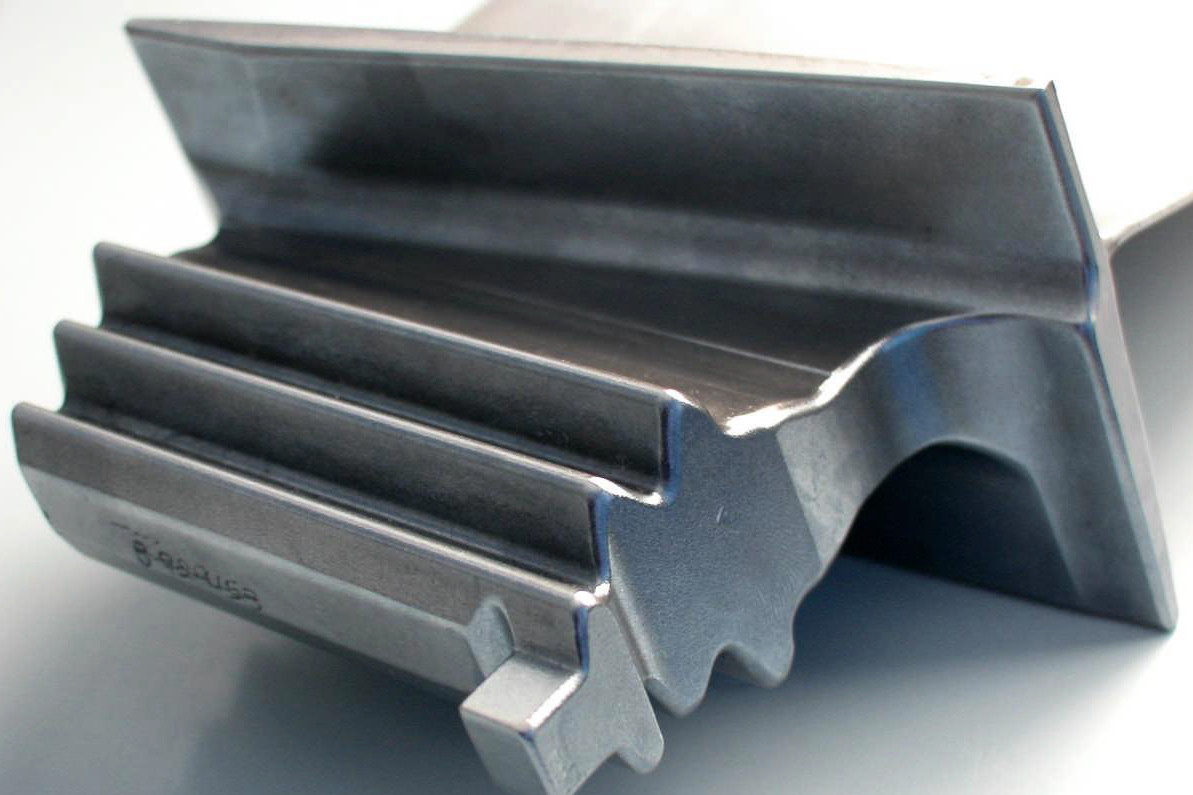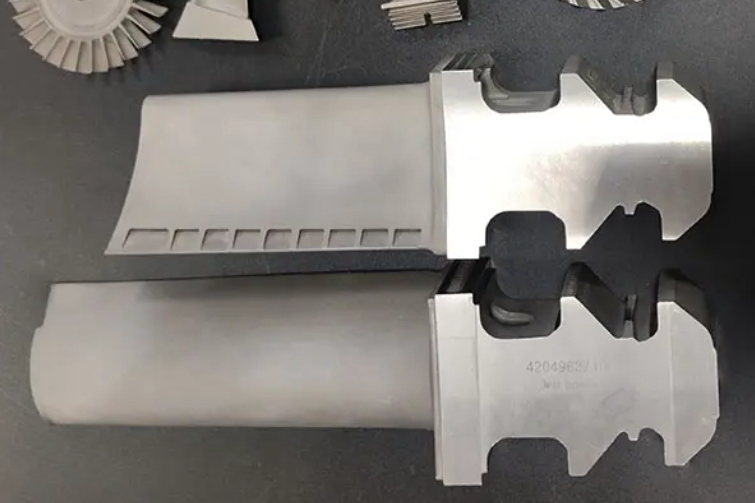Challenges in Single Blade Casting for Single Crystal Structures
Turbine blades are critical components in various high-performance applications, such as aerospace, power generation, and defense. These blades must withstand extreme heat, pressure, and mechanical stress conditions while maintaining performance and reliability over prolonged periods. Single-crystal casting is a primary method for enhancing the durability and efficiency of turbine blades. By eliminating the grain boundaries that typically limit a material's mechanical properties, single-crystal turbine blades offer superior resistance to thermal fatigue, creep, and other high-stress conditions.

However, producing single crystal turbine blades comes with several challenges. From the complexity of the casting process to the selection of suitable materials, achieving high-quality single-crystal structures requires precise control and advanced techniques. This blog delves into the key challenges faced during single-blade casting for single-crystal structures, focusing on the casting process, suitable alloys, post-processing, testing methods, and industry applications.
The Complexity of Single Blade Casting
Single-blade casting for turbine blades involves intricate processes that demand precise control at every stage. One of the first challenges in creating single crystal blades is the mold design and material choice. Molds for turbine blades must withstand extreme temperatures and high mechanical stresses. Traditional casting molds, often made from ceramics or other heat-resistant materials, are subject to significant thermal and mechanical loads during the casting process. Designing molds that can accommodate the complex geometries of turbine blades while ensuring uniform temperature distribution is no simple task. Superalloy investment casting techniques are often employed to overcome these challenges, providing molds that can withstand extreme environments and complex part geometries.
Control of crystal growth is another major challenge. Single crystal turbine blades are produced through directional solidification, where the molten material cools in a controlled manner to form a single uninterrupted crystal structure. However, achieving consistent crystal growth across large, intricate blades takes a lot of work. The cooling rate and temperature gradient need to be tightly controlled to ensure that the material solidifies in the desired direction without forming secondary grains that could weaken the blade. This process requires advanced control mechanisms, such as those used in single crystal casting, to ensure precise alignment of the crystal growth.
The directional solidification process itself introduces another layer of complexity. During solidification, the crystal structure grows from the bottom to the top of the mold, but maintaining an even temperature gradient across the entire mold is challenging. Any variations in the temperature gradient can cause the material to solidify in an undesirable way, leading to misaligned crystals or incomplete solidification. Advanced superalloy CNC machining after casting can also help correct any deviations in the crystal structure, ensuring that the final turbine blade meets stringent specifications for performance and reliability.
Suitable Single Crystal Casting Superalloys
The choice of material is paramount in producing high-performance turbine blades, and the selection of superalloys for single-crystal casting adds another layer of complexity to the process. Materials like Inconel alloys, CMSX series, Rene alloys, and specially designed single-crystal alloys are commonly used for turbine blades due to their excellent high-temperature strength, corrosion resistance, and overall mechanical properties. However, each of these alloys has specific casting challenges associated with them.
Inconel Alloys
Inconel alloys, such as Inconel 718, Inconel 738, and Inconel 713, are widely used in aerospace and power generation applications. These alloys are favored for their strength at high temperatures and oxidation resistance. However, casting Inconel alloys into single crystals presents challenges related to their complex alloy composition. Achieving a uniform single-crystal structure in these alloys can be difficult, especially when dealing with large blades that require precise control over the cooling rate.
CMSX Series
The CMSX series, such as CMSX-10 and CMSX-486, are specifically designed for single crystal casting. These alloys offer excellent creep resistance and high-temperature performance, making them ideal for turbine blades in aerospace applications. However, casting these alloys into single crystals requires precise control over the solidification process, as CMSX alloys are sensitive to slight variations in temperature and cooling rates. A misstep in the casting process can lead to the formation of defects, such as grain boundaries or misoriented crystals, which can compromise the material’s overall strength.
Rene Alloys
Rene alloys, such as Rene 104 and Rene 88, are another class of materials commonly used for single crystal turbine blades. Rene alloys are known for their resistance to thermal fatigue and oxidation, which is crucial for blades operating in high-temperature environments. However, casting Rene alloys into single crystal structures presents challenges related to maintaining consistent composition and avoiding contamination. The alloy's sensitivity to microstructural variations can affect the uniformity of the single crystal, which is essential for ensuring the blade's long-term reliability.
Single Crystal Alloys
Lastly, specially designed single crystal alloys like PWA 1480 and CMSX-2 offer superior performance in high-stress, high-temperature environments. These alloys are engineered for turbine applications but require advanced techniques to ensure the consistency of the crystal structure. Critical challenges include managing the thermal gradients during casting and ensuring the alloy's purity throughout the process.
Post-Processing Challenges in Single Crystal Blade Casting
Once the turbine blade has been cast, post-processing plays a critical role in enhancing its mechanical properties. Several post-processing steps address imperfections and optimize the blade's performance, but these processes are challenging.
Hot Isostatic Pressing (HIP)
Hot Isostatic Pressing (HIP) is a common post-processing technique used to eliminate any residual porosity that may have formed during casting. HIP involves subjecting the blade to high pressure and temperature in a controlled environment, which helps to densify the material and close any small voids. While HIP improves the blade's mechanical properties, it is a challenging process that requires precise temperature and pressure control. Any inconsistencies in the HIP process can lead to defects such as internal cracking, compromising the blade's strength and longevity.
Heat Treatment
Heat treatment is another post-processing step that significantly influences the blade's properties. Heat treatment involves heating the blade to a specific temperature and then cooling it at a controlled rate to achieve the desired microstructure. The goal is to enhance the blade's creep resistance, fatigue strength, and thermal stability. However, heat treatment is challenging because any deviation from the ideal temperature or cooling rate can cause the formation of undesirable grain boundaries, weakening the blade. For single crystal blades, even the slightest disruption in the heat treatment process can significantly reduce performance.
Superalloy Welding
Superalloy welding is sometimes used to repair or modify single-crystal turbine blades. However, welding these materials is extremely difficult, as it can disrupt the crystal structure and introduce new defects. Special techniques and filler materials are required to ensure the weld does not negatively impact the blade’s performance. The challenge lies in ensuring that the welded area maintains the integrity of the single crystal structure and does not introduce weaknesses or inconsistencies.
Thermal Barrier Coating (TBC)
Thermal Barrier Coating (TBC) is often applied to turbine blades to protect them from extreme temperatures. TBCs act as a protective layer, preventing the blade material from being directly exposed to high-temperature gases. However, applying a uniform and durable coating can be challenging, particularly for single-crystal alloys. The coating must adhere adequately to the blade's surface without causing cracks or delamination, and it must remain adequate over the blade's life, even under harsh operating conditions.
Testing and Inspection Challenges
To ensure that single crystal turbine blades meet the highest performance standards, they undergo rigorous testing at multiple stages of production. However, testing these blades comes with its own set of challenges.
Metallographic Microscopy and Scanning Electron Microscopy (SEM)
Metallographic microscopy and Scanning Electron Microscopy (SEM) are essential for examining the microstructure of turbine blades. These techniques help identify potential defects, such as cracks, voids, or misalignment in the crystal structure. However, detecting such flaws in large turbine blades can be difficult, mainly when the defects are located deep within the material or smaller than the microscope's resolution. These techniques' high cost and complexity may also limit their use in routine production.
Tensile Testing
Tensile testing assesses a material's strength by stretching a sample until it fails. For single crystal turbine blades, however, the results of tensile testing can be complicated due to the anisotropic properties of the material. Single crystal alloys have different mechanical properties along different crystallographic axes, which can affect how the material behaves during testing. This makes interpreting tensile testing results more challenging compared to conventional polycrystalline materials.
Fatigue Testing
Fatigue testing is another critical step in evaluating the blade's long-term performance. These tests simulate the high-stress, high-cycle conditions turbine blades experience during operation. However, replicating real-world fatigue conditions in a laboratory setting is difficult, as turbine blades undergo complex thermal and mechanical loads during actual use. Moreover, slight casting or heat treatment variations can significantly impact fatigue testing results.
X-ray and 3D Scanning
X-ray testing and 3D scanning technologies are used for non-destructive testing of single crystal turbine blades. These methods can identify internal defects, such as voids or cracks, that may not be visible from the surface. However, achieving the level of resolution needed to detect micro-defects in a large, complex part like a turbine blade is challenging. Moreover, advanced 3D scanning equipment requires significant investment and expertise.
Electron Backscatter Diffraction (EBSD)
Electron Backscatter Diffraction (EBSD) is an advanced technique used to analyze the orientation of crystal structures. EBSD testing can help verify the alignment of the single crystal and detect any misorientations that could weaken the blade. However, performing EBSD on large turbine blades can be time-consuming and technically challenging, especially when dealing with intricate geometries.
Industry Applications and Their Specific Casting Challenges
Single crystal turbine blades are essential in several industries where high-performance components are required to operate under extreme conditions. Each industry presents unique challenges that influence the casting process.
Aerospace and Aviation
In the aerospace and aviation sectors, single crystal turbine blades are used in jet engines, which must withstand high thermal loads, mechanical stress, and corrosive environments. The challenges in this industry include maintaining consistency across mass production and adapting to evolving engine designs. Aerospace and aviation applications require blades that meet stringent safety and efficiency standards.
Power Generation
Power generation relies heavily on single crystal blades for gas and steam turbines. These components play a critical role in improving energy efficiency and reducing emissions. The primary challenges in this industry are ensuring long-term reliability and resistance to high operational temperatures. Power generation facilities need blades capable of withstanding continuous operation in extreme conditions while minimizing wear and failure rates.
Oil and Gas
The oil and gas industry demands high-performance turbine blades for applications such as gas compression and power generation in remote locations. This industry's harsh environments and extreme temperatures require blades that can endure prolonged use without failure, making the casting process particularly demanding. Oil and gas operations benefit significantly from single crystal castings that offer durability and performance under extreme stress.
Military and Defense
In the military and defense sectors, turbine blades are used in advanced propulsion systems and other critical applications. The stringent performance requirements and need for high reliability add to the challenges of producing single crystal blades for defense purposes. Military and defense projects depend on these blades to perform consistently in high-stress, high-temperature environments crucial for national security.
FAQs
What are the primary challenges in achieving a uniform single crystal structure in turbine blade casting?
How do specific superalloys like CMSX and Rene alloys address the demands of single crystal casting?
What role does directional solidification play in the single crystal casting process?
Why is Hot Isostatic Pressing (HIP) essential for post-processing single crystal turbine blades?
What testing methods are most effective for detecting defects in single crystal turbine blades?



